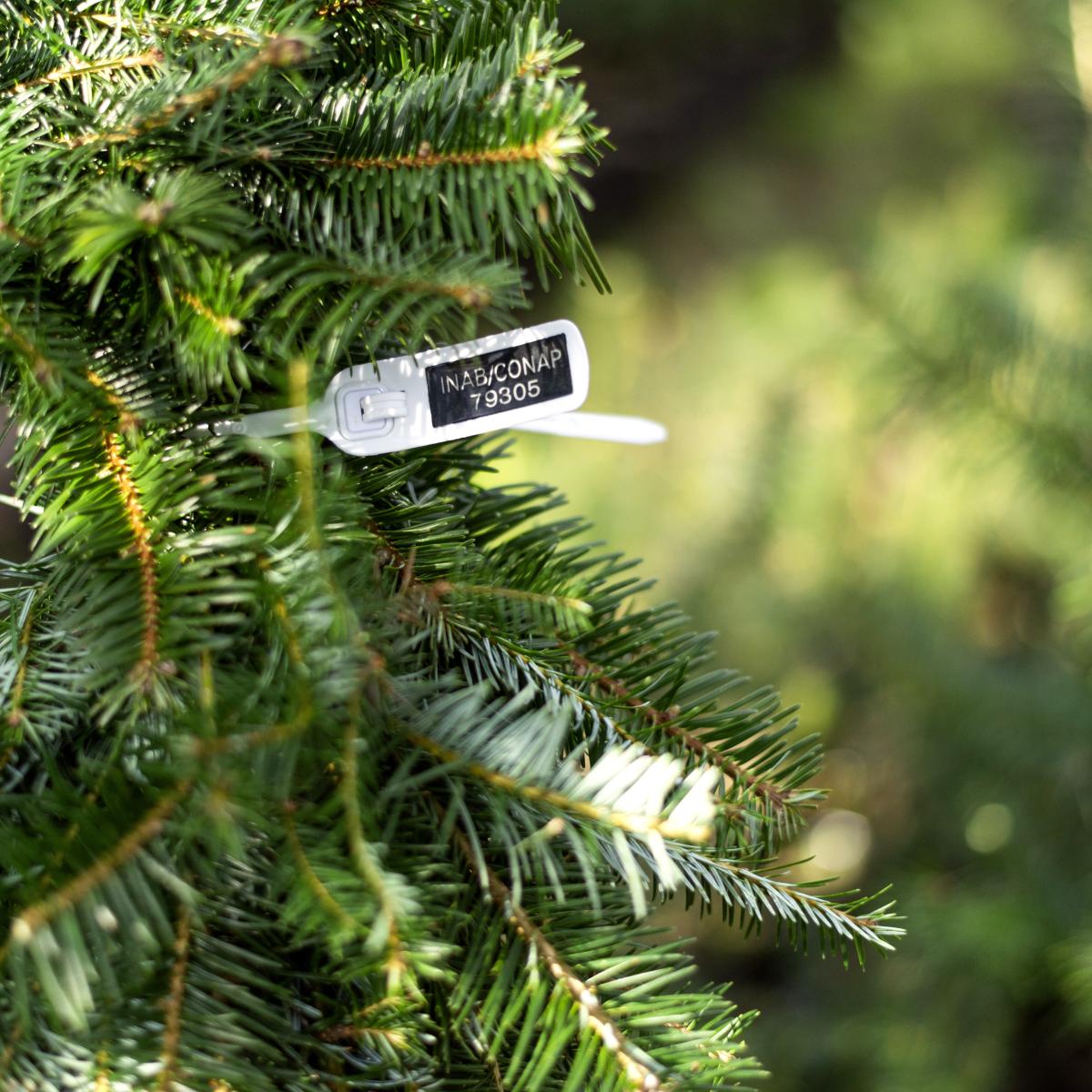Pinabetes Rooted in Guatemala
How USAID is creating jobs and conserving native pine trees in Guatemala
Pablo Pérez, the vice president of the National Pinabete Growers, a non-profit civil society organization made up of groups of tree growers, is standing among the numerous pinabetes in his Christmas tree stand that have been legally cut and prepared for the holiday season.
The Abies Guatemalensis, commonly known as the pinabete, is a pine tree native to Guatemala, known for its strong pine smell and branches full of dark green to blue needles. Though the pinabete can grow up to 35 meters in height, today it is uncommon to find a tree this tall due to illegal logging that has driven the pinabete to the brink of extinction, with more than 100,000 trees harvested every year.
“We, through our organization, are rescuing a species that was going into extinction,” said Pablo as he explained the group's work. Pablo is an agronomy engineer and for 8 years he has brought these skills to his plantation, where he harvests roughly 500 mature pinabetes every year and cultivates another 5000 young pinabetes.
The plantation, located in the mountainous western highlands of Guatemala in the San Marcos department, provides a reliable income for his family and promotes the conservation of the pinabete.
“The substantial change is that we are not losing these native trees.” -Pablo Pérez
USAID supports groups like Pablo’s, through the Climate, Nature, and Communities in Guatemala project implemented by Rainforest Alliance. USAID works to conserve Guatemala’s biodiversity, promote sustainable development of communities dependent on forest products, reduce deforestation and greenhouse gas emissions, and mitigate the negative impacts of climate change, reducing migration and improving Guatemalan’s livelihoods. USAID supports 21 forest nurseries like Pablo’s, which grew 766,000 trees in 2021.
USAID has also partnered with the government of Guatemala’s National Forest Institute and National Council of Protected Areas to develop the National Strategy for the Conservation of the Pinabete. USAID works with groups like Pablo’s to bring environmental awareness, establish forest nurseries, and create sustainable income through forest products. Products derived from the pinabete include wreaths, garlands, and Christmas trees. To combat illegal logging and illegal sales of the pinabete, the Government of Guatemala utilizes a strict tree tagging process, allowing only the sale of trees from legal farms. Legal trees are available throughout Guatemala City markets.USAID recently secured a contract with PriceSmart Clubs in Guatemala City to sell pinabete trees and products, broadening the market for these sustainable, legally harvested trees, even further.

Pinabete forests are mostly located in the upper parts of the western highlands of Guatemala, an area with the highest levels of birth, illiteracy, malnutrition, and poverty in the country. To address this, USAID trained over three thousand people in the sustainable management of natural resources, increasing and diversifying their income through the protection, conservation, and sustainable farming of pinabete trees. From October 2020 to September 2021, USAID’s work in developing the pinabete industry generated over $1,100,000 for communities in the Western Highlands.
For Pablo pinabetes are an important source of income and a benefit to the environment. His hope is to increase awareness of the carbon capturing qualities of these trees, letting Guatemalan growers, eventually, take advantage of carbon credits for their work.
When asked why Guatemalans should buy legal, locally grown trees he replied, “Buying this tree is saving a forest and is helping provide incomes for Guatemalans.”
Guatemala is one of the most ecological diversity countries in the world. With 14 ecoregions and 66 distinct ecosystems, its physiography varies immensely, lending itself to numerous micro-climates and an array of native flora and fauna species, like the pinabete. This rich biodiversity supports food security, clean air and water, economic development, and local livelihoods. USAID is committed to addressing urgent threats to Guatemala’s biodiversity and drivers of the country’s greenhouse gas emissions through local and global climate action, including empowering communities to sustainably generate income from natural resources.
Credits:
Photos by: Benjamin Ilka & Victor H Delgado







